Ice Station Zebra Classic Cold War Movie Memorabilia
Hollywood Archives
By William J. Felchner - December 08, 2023
The late, eccentric billionaire Howard Robard Hughes Jr. (1905-76) was a big fan of one film, Ice Station Zebra (1968), which he reportedly had viewed hundreds of times. Hughes was not alone in his admiration for the movie, as Ice Station Zebra continues to capture the attention and admiration of both cinema fans and movie memorabilia collectors today. Ice Station Zebra is loosely based on the 1963 bestselling book of the same name by Scottish novelist Alistair MacLean. Producing the picture for MGM were James C. Pratt, Martin Ransohoff and John Calley. Writing the screenplay were Douglas Heyes, Harry Julian Fink and W.R. Burnett, with John Sturges directing and Michael Legrand delivering the rousing music score. Heading the cast were Rock Hudson as Commander James Ferraday, Ernest Borgnine as Boris Vaslov and Patrick McGoohan as David Jones. The supporting cast included Jim Brown, Tony Bill, Lloyd Nolan, Alf Kjellin, Gerald S. OLoughlin, Ted Hartley, Murray Rose, Ron Masak, Sherwood Price, Lee Stanley and Joseph Bernard. Budgeted at $8 million (a figure which eventually ballooned to $10 million), Ice Station Zebra began filming in June 1967. Two duel diesel-electric powered submarines were used as doubles for the fictional nuclear-powered submarine U.S.S. Tigerfish. The U.S.S. Ronquil was used for surface shots while the U.S.S. Blackfin was employed for surfacing and submerging scenes, shot near Pearl Harbor in Hawaii. Principal photography was completed in 19 weeks. Ice Station Zebra begins when a satellite re-enters the atmosphere and ejects a capsule via parachute near Station Nord, Greenland, in the frozen Arctic Ocean ice pack. Using a homing beacon, a man approaches the capsule while another interested party secretly observes the unfolding situation nearby. While in dock in Scotland, Commander James Ferraday is ordered to sail his nuclear attack submarine U.S.S. Tigerfish to Drift Ice Station Zebra, ostensibly to rescue the stranded members of a British scientific weather station. Eventually coming on board is an enigmatic British intelligence agent named Mr. Jones and a United States Marine platoon commanded by the no-nonsense Captain Leslie Anders. Also joining the group is Boris Vaslov, a Russian defector and spy whose loyalties are questionable. The mission proves perilous, as the Tigerfish moves beneath the frozen Arctic but is unable to break through the thick ice upon reaching its destination. Commander Ferraday then orders a torpedo launch in order to bore an opening, but that proves nearly fatal when the torpedo tube floods, sending the Tigerfish spiraling dangerously down to crush depth. Ferraday manages to save his submarine, only to discover later that the tube had been sabotaged. The Tigerfish eventually breaks through a thin layer of Arctic ice, with Ferraday, Jones, Vaslov and the marines arriving at the weather station in a raging blizzard. Here they find a nearly burned-out structure with the survivors suffering from hypothermia. Secret agent Jones then reveals his true mission: the retrieval of a specially-made British camera with film enhanced by the Americans. The technology was stolen by the Soviets and sent into orbit via satellite in order to photograph American nuclear missile silos. However, in the process, the camera also snapped surveillance photos of Russian nuclear missile silos as well. Due to a malfunction, the Soviet satellite crashed to earth near Ice Station Zebra, with the Russians, Americans and British now in hot pursuit of the downed craft and its precious cargo. Ice Station Zebra made its world premiere at the Cinerama Dome in Los Angeles, Calif., on Oct. 23, 1968. The next day, the film went into general release around the country, where it failed to click at the box office. Contemporary reviews of the picture were a mixed bag, with the Hollywood trade paper Variety giving it a thumbs up and Roger Ebert of the Chicago Sun-Times panning it as a dull, stupid movie. In later years, Ice Station Zebra, which garnered two Oscar nominations (Best Cinematography and Best Effects, and also Special Visual Effects), evolved into a semi-cult film of sorts. As previously noted, reclusive billionaire Howard Hughes became the movies number one fan. While secretly living at his Las Vegas Desert Inn penthouse in the mid-to-late 1960s (before the era of VCRs), Hughes would repeatedly call the all-night local TV station, KLAS Channel 8 in Las Vegas, which he had purchased in 1967 for $3.6 million, to demand endless showings of Ice Station Zebra. Needless to say, the boss generally got his way. Ice Station Zebra movie collectibles demand fairly decent, yet affordable prices in todays marketplace. The films one sheet Cinerama style A poster (27-by-41 inches), winningly executed by artist Robert McCall, is a real beauty. Featuring the blurb Ice Station Zebra...Remember The Name Your Life May Depend On It!, one example in fine/very fine condition sold at auction for $139. Another one sheet variation poster (27-by-41 inches), this one drawn by artist Howard Terpning and featuring the films four stars, Rock Hudson, Ernest Borgnine, Patrick McGoohan and Jim Brown, is of interest to specialized collectors of the film. One example in folded very fine condition brought $65. Always tops on any collectors list is the movies eight-card lobby set, which pictures color scenes from Ice Station Zebra. So named as these cards were prominently displayed in movie theater lobbies to promote the film, one complete set in fine condition brought $45 at auction. The pictures insert poster (14-by-36 inches) is also an interesting entry. Once again, Howard Terpning was the artist, with one example in folded very fine- condition selling for $81 at auction. Foreign movie posters are of great interest to collectors as well. The British quad poster (29-by-39 inches) is intriguing, featuring an American submarine and a Soviet warplane on a collision course to the Arctic. One example in very fine- condition realized a top bid of $109 at auction. The Australian Daybill poster (13-by-30 inches), with the blurb A new break through in adventure and suspense!, is a real charmer. One example in very fine+ condition sold at auction for $58. An array of miscellaneous collectibles are also available. For those who like movie stills, a collection of 60 black-and-white 8-by-10 photos (with typed MGM studio information on back) in very fine condition brought $155.35 at auction. For your listening pleasure, an original soundtrack LP vinyl album on the MGM label signed by artist Howard Terpning came up for auction. In fine/very fine condition, the record sold for $59. The movies pressbook, officially titled Exhibitors Campaign Book, is another fine piece of miscellaneous memorabilia. Measuring 8.5-by-11 inches, the book features the entire promotional campaign for Ice Station Zebra in the form of sample posters, lobby cards, advertisements and other information. One British example in uncut very fine- condition hit a top bid of $32 at auction. Original film props constitute one of the most fascinating aspects in the movie memorabilia field. A miniature model of a Russian Mig-21 fighter jet used in Ice Station Zebra came up for auction in 2023. And although the model showed its age with rough production handling and some damage, this one-of-a-kind prop still managed to bring $9,375 at auction. Auction results and images are courtesy of Heritage Auctions, Dallas, Texas. William J. Felchner is a graduate of Illinois State University. His work has appeared in a number of periodicals, including True West, Hot Rod, Movie Collectors World, Big Reel, Old West, Corvette Quarterly, Goldmine, Illinois, Sports Collectors Digest, Frontier Times and Pennsylvania Magazine.

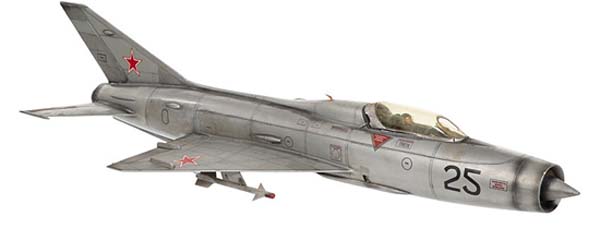
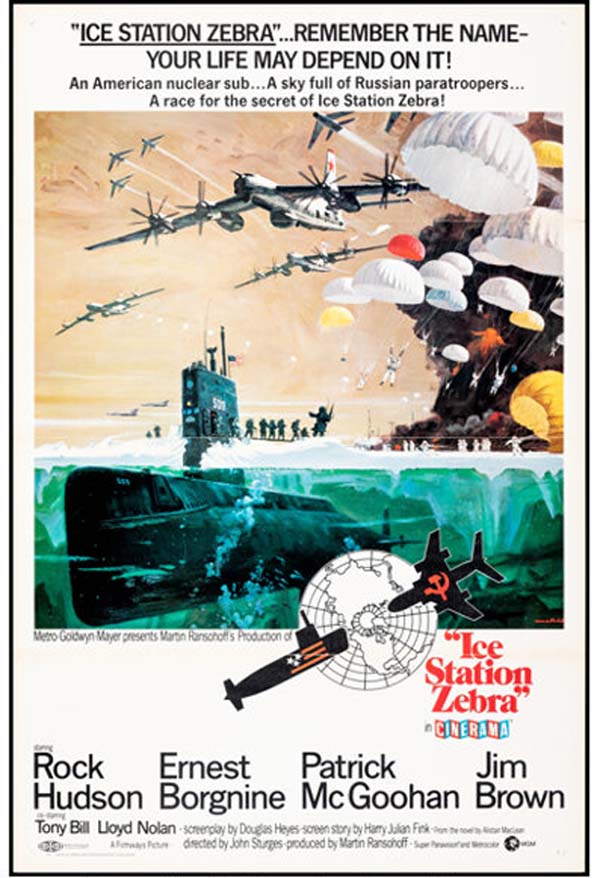
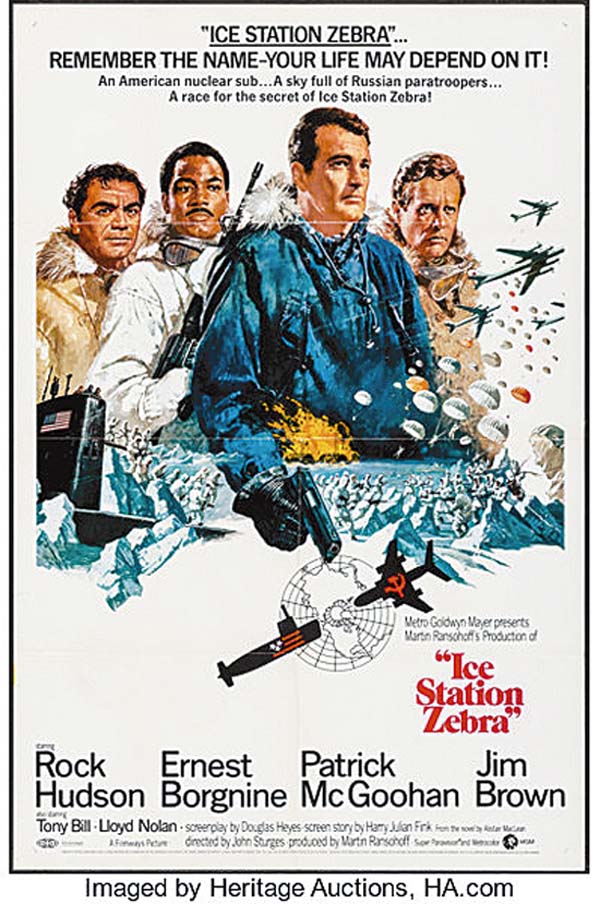
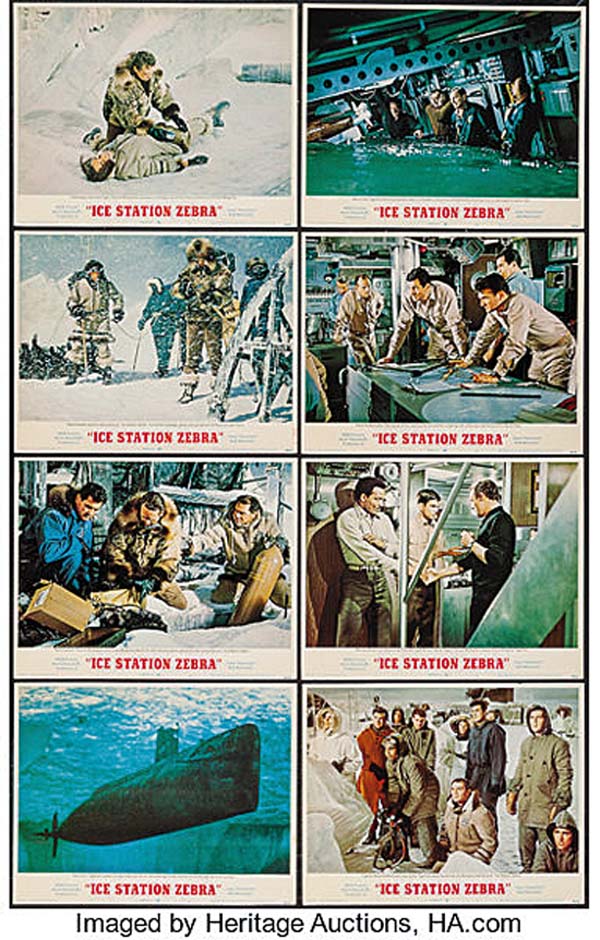

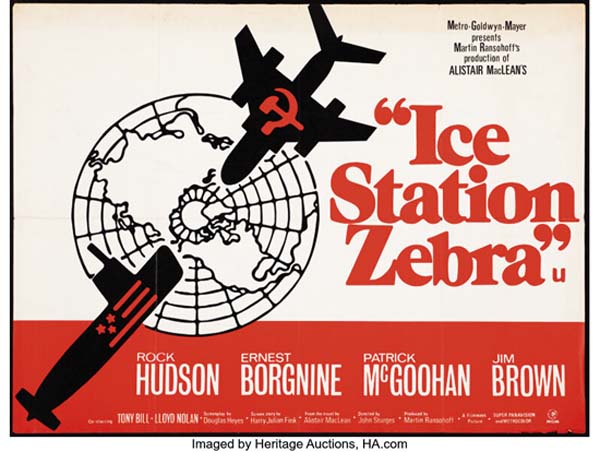
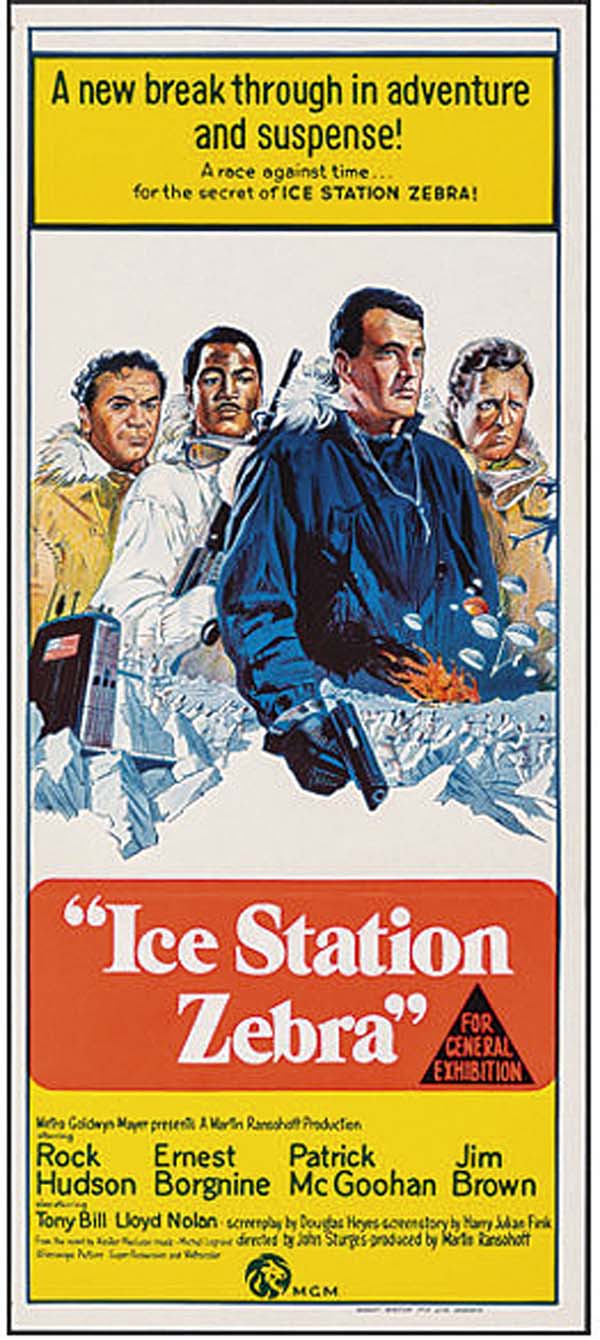
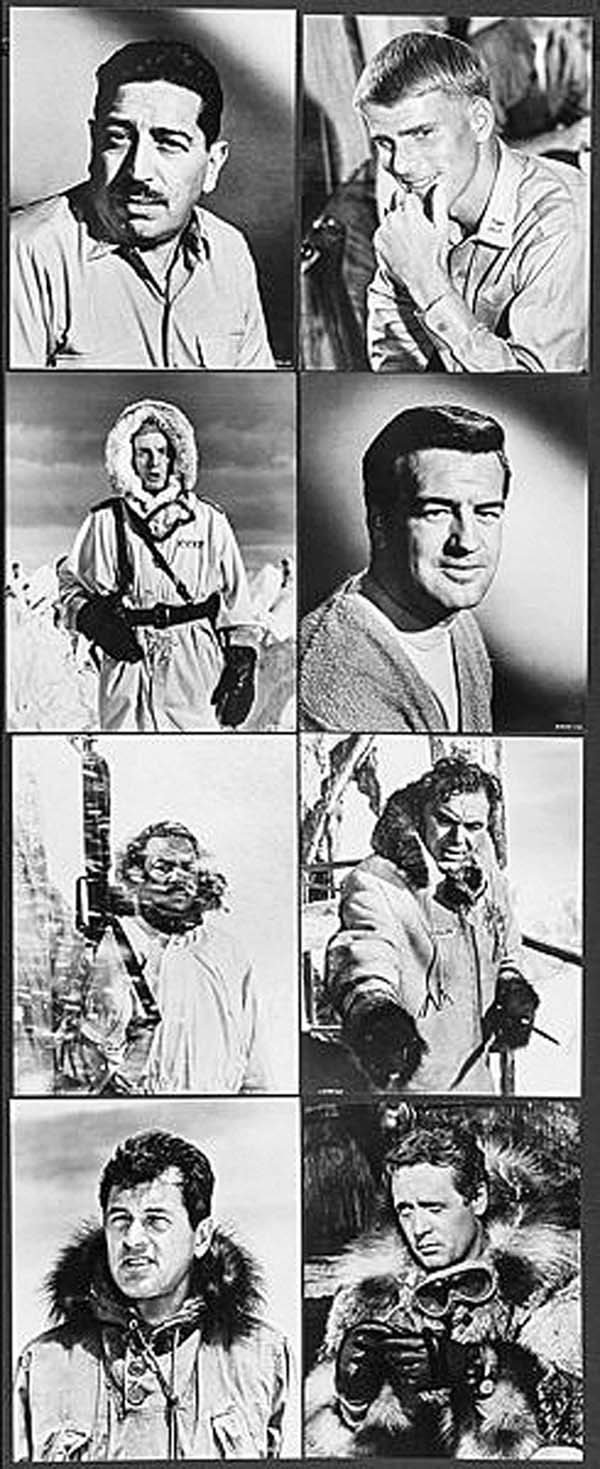
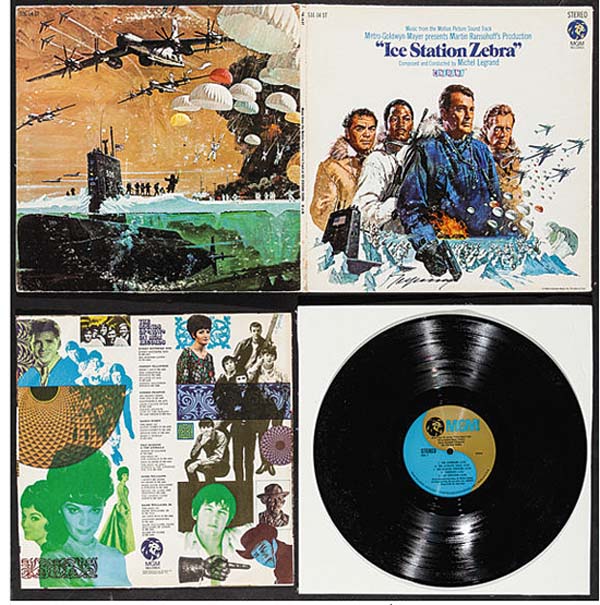
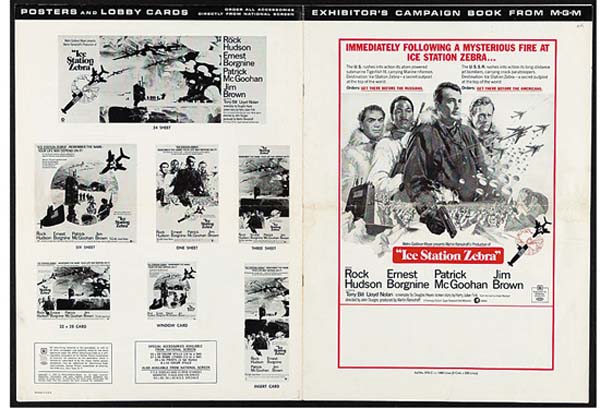
SHARE
PRINT